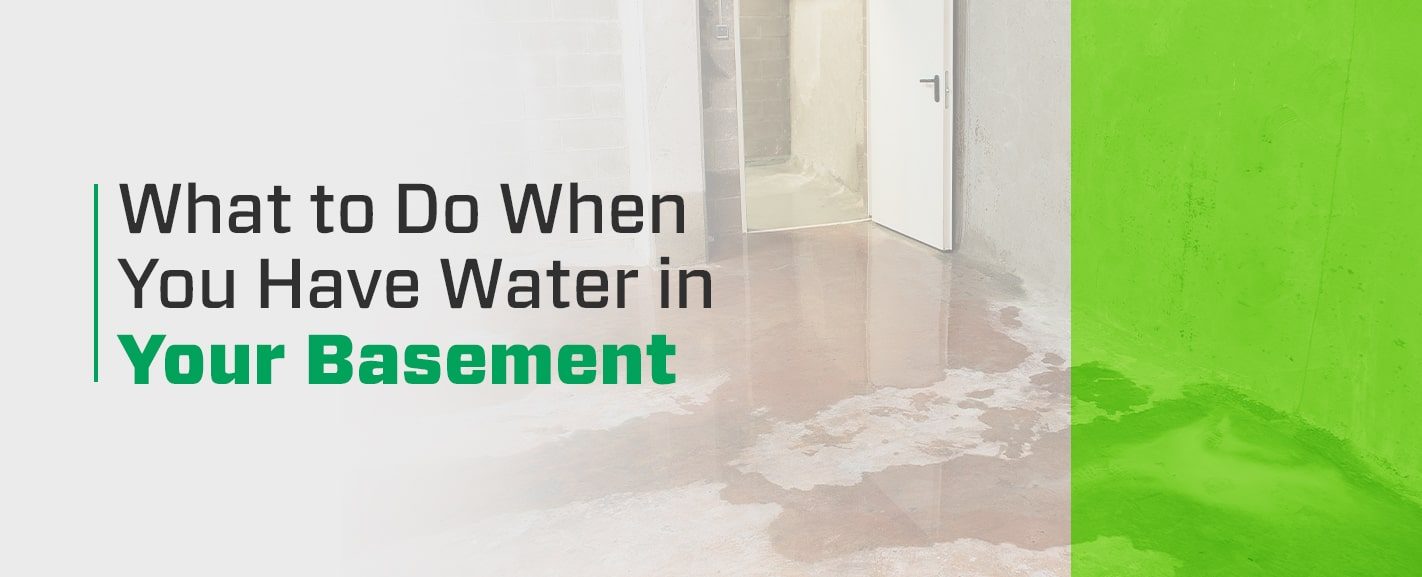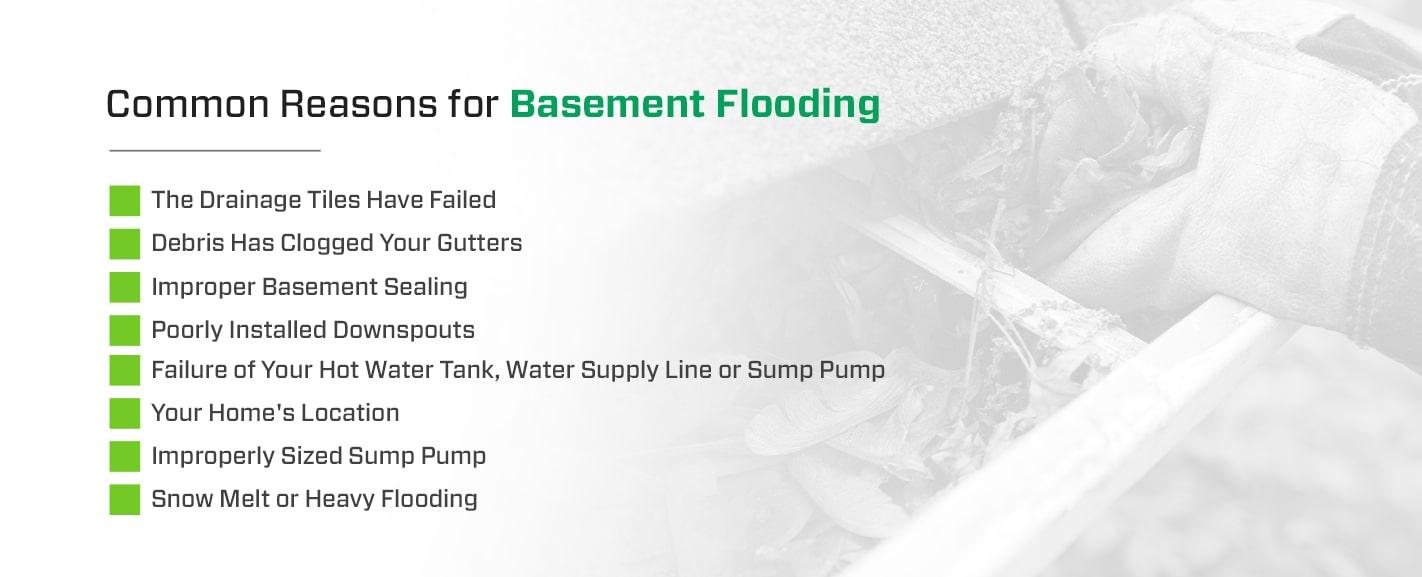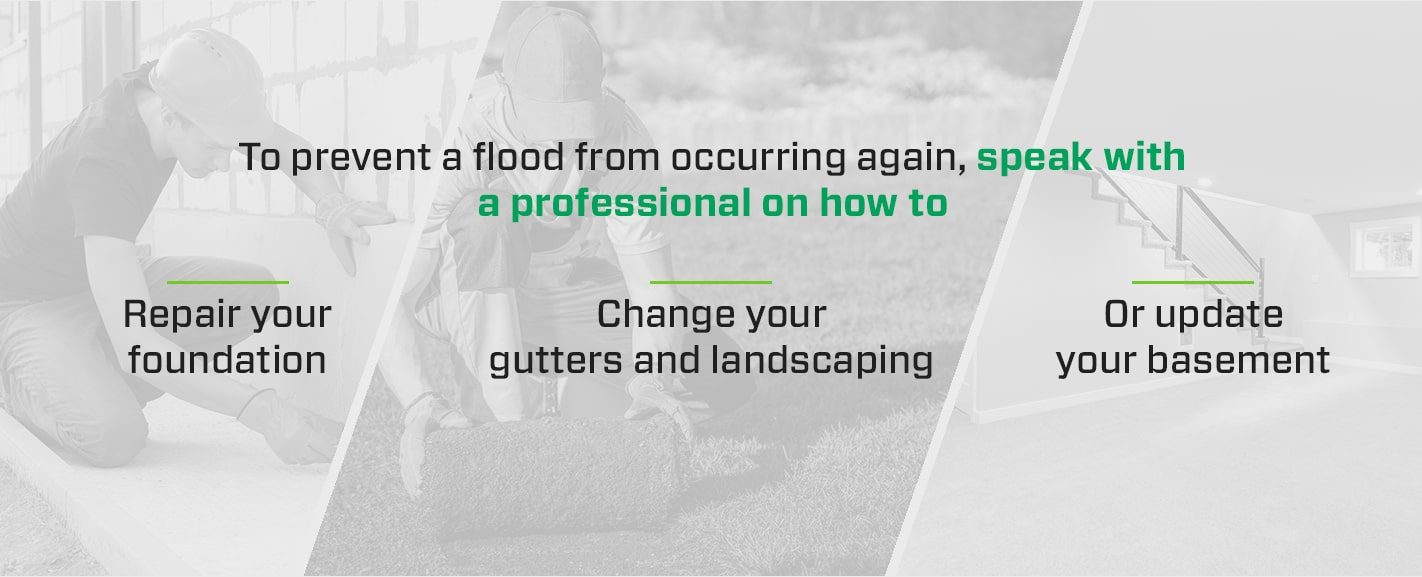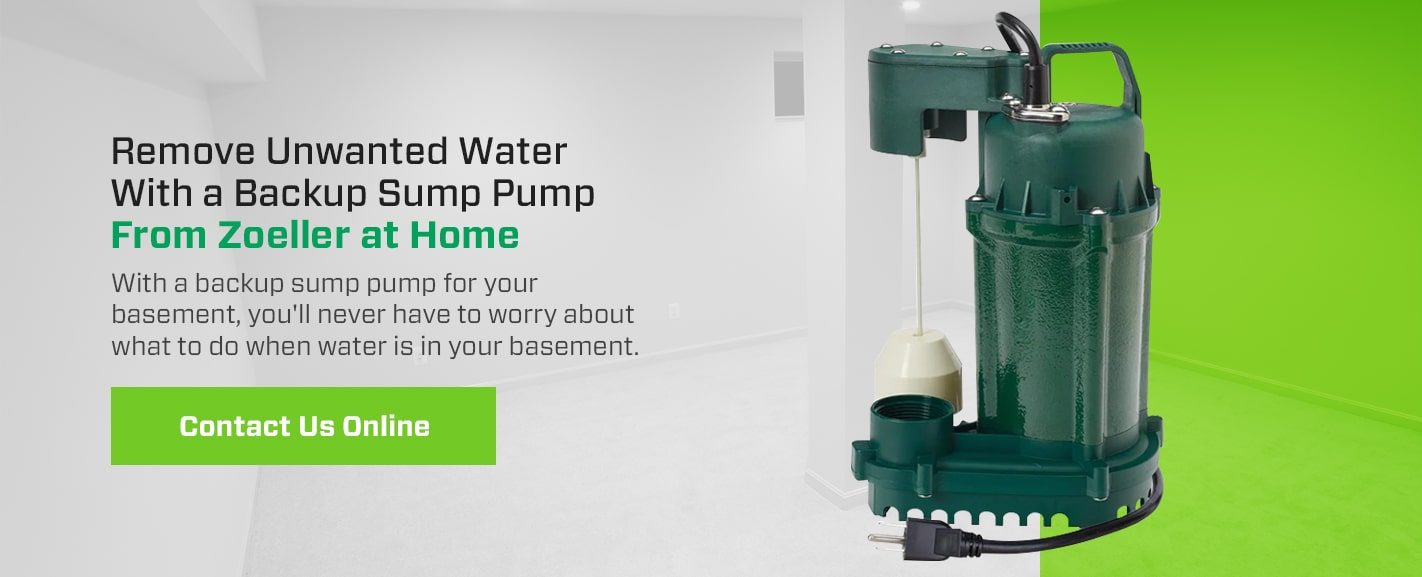What to Do When You Have Water in Your Basement
November 19, 2021
In this guide, we’ll review the most common reasons for basement floods and provide some tips on how to remove water from your basement and prevent this unwanted situation in the future.

What to Do After a Basement Flood
The actions you take immediately after finding water in your basement are critical. In the event of a flooded basement, follow these tips for DIY basement water removal after rain.
- Do not enter until safe: Flooding in your basement doesn’t only cause property damage — it can also be dangerous. Proceed with caution until you know that the space is safe.
- Ensure the power is off: Proceed with caution and when in doubt always call a professional. If your circuit breaker is somewhere other than your basement you may be able to shut the power off yourself. Electrical devices or appliances exposed to the water could pose a safety threat if your power is not disconnected.
- Remove the water with a sump or utility pump: The next step is to remove all the water, so you can assess the extent of the damage. A flooded basement could be a sign that your sump pump has failed or is undersized. You may have to buy another one and use it to pump out the water. It is always a good idea to have a replacement pump on hand for these scenarios. Using a squeegee direct the water towards the sump pit. Once the sump pump has removed all possible water, clean up the remaining water with towels and a mop. If your basement doesn’t have a sump pit using a submersible utility pump is an efficient way to clear the water. If the water in your basement is over two feet deep, we recommend that you contact a professional to remove the water for you. Either way, dry out your basement as soon as possible — otherwise, mold will grow, which will only cause more property damage.
- Dry out wet items: To dry out your basement effectively, you’ll need to remove all wet things and put them in a dry location, such as your garage. That includes bulky items like furniture. If you have carpet, you should also rip it out.
- Dry the area: Basements tend to be damp places anyway and will not dry on their own. A dehumidifier or household fans can help remove extra moisture, but if you want to dry your basement out quickly to reduce the chances of mold growth, you’ll most likely need to rent or purchase industrial fans or blowers.
- Prevent mold growth: If you notice mold growth following the flooding, it may be necessary to remove portions of your drywall. Setting up a HEPA purifier that filters allergens and mold spores out of the air is also a good idea. Every day following the flood, look for mold — if you find a spot that looks suspicious, clean it using warm water and bleach. Mold isn’t always visible and can endanger your health. Contact a mold remediation specialist for an inspection if you have any concerns.
- Prevent basement flooding from happening again: Determine why the flood occurred. Does your foundation have cracks? Did a massive storm flood the yard and seep into your basement? Is your sump pump old and in need of an upgrade? To prevent a flood from occurring again, speak with a professional on how to repair your foundation, change your gutters and landscaping or update your basement.
Note: While performing the above steps, file an insurance claim as soon as possible. Ideally, your insurance company will compensate you for your damaged items and the costs of restoring your basement.

Common Reasons for Basement Flooding
By definition, basements are partially or fully underground, which makes them susceptible to flooding. Though floods frequently occur after heavy rain or rapid snowmelt, flooding can happen any time of year, even in dry conditions.
There are several causes for flooding in basements, which can range from drainage problems to burst pipes. By identifying what led your basement to flood, you’ll be able to better protect your home from future water damage.
Here are some of the most prevalent reasons for flooded basements.
The Drainage Tiles Have Failed
Most homes have a drainage system that channels water away from the foundation, so it doesn’t make its way into your basement. However, if your drainage system is unsuccessful or inadequate, your basement may flood as a result, especially during a heavy rainfall. To figure out whether a defective drainage system is causing the flooding, you will need to hire a drainage specialist to come to your home and inspect it.
Debris Has Clogged Your Gutters
Gutters direct water away from your house, but if there are trees nearby, your gutters may have become clogged with leaves, sticks, seed pods and various other debris. This clogging will prevent water from going off your roof, down the downspout and away from your house. To prevent water from collecting on the roof, always remember to clean your gutters regularly. While this task is relatively simple and may involve nothing more than removing some leaves and sticks in the spring, accessing your gutters can also be dangerous.
Improper Basement Sealing
Homebuilders must correctly seal foundation and basement tiles, especially if you live in an area that regularly experiences hurricanes or heavy rainfall. Hurricanes feature powerful winds and rain that often cause basements to flood. Furthermore, in regions that receive large amounts of snow, a poorly sealed basement may flood once the snow starts to melt.
If your basement is flooding during most or all rainstorms, an improperly sealed basement could be the culprit.
Poorly Installed Downspouts
Downspouts are another component of your drainage system that diverts water away from your home and foundation. However, they require proper installation to serve their function.
First, a downspout must be no closer than five or six feet from the wall of your basement and point away from your home, generally toward your street or your backyard. A missing or broken downspout will cause water to accumulate near the house, which may slowly seep into your basement or come in through the cracks in your foundation.
If your gutters are overflowing, water will come down the sides of your home and may pool by your foundation, where it may then seep into your basement. Fifteen minutes after a rainstorm ends, go outside to see whether your gutters are directing rainwater away from the house. If they’re overflowing, water may be seeping into the foundation and causing damage.
Failure of Your Water Heater, Water Supply Line or Sump Pump
Several sources inside your basement can also cause floods.
- Your water heater: Water heater, which are typical basement features, contain gallons of water. When they leak, they can cause extensive flooding. Have your hot water tank inspected annually to prevent failure.
- Your water supply line: Your pipes may break due to old age, poor installation or freezing, the last of which ultimately leads to cracking and bursting.
- Your sump pump: If your home has a sump pump to remove unwanted water and it fails, this could also be the cause of your basement flood. Inspect this pump frequently to ensure it’s in working order and install a backup sump pump. Ensure the sump pump is properly sized for your home.
Your Home’s Location
If the land surrounding your home does not slope downward, this will increase the risk of basement flooding. A house’s ideal location is a place where it won’t take on runoff from melting snow or rainstorms. If there is a depression near your home where you think water could pool, fill it using clay soil, which will help make the lower areas surrounding your home more level and perhaps divert water from the house.
The issue may extend beyond your property — if there are large hills nearby, this could also increase the chances of your basement flooding. Speak with a yard grading professional about what you can do to help prevent your basement from flooding during a storm.

How to Prevent Basement Flooding During Heavy Rain
Some homeowners believe that having a sump pump will ensure their basement never floods. However, they often fail to consider one essential fact — that even quality sump pumps have a limited life span and are dependent on the power not going out. To give yourself peace of mind, we recommend installing a battery backup sump pump.
As its name suggests, a battery backup sump pump will take over when your main sump pump fails. These auxiliary pumps are advantageous in regions with heavy rain and snowfall. In these situations, power outage often occurs and a battery backup sump pump can protect your home.
Secondary sump pumps usually sit directly over the main pump, and they help prevent flooding in cases where the primary pump fails to remove the rising water.
Without a battery backup sump pump, your primary sump pump is your home’s only defense against water coming in and flooding your basement — and this only defense can fail for various reasons, including:
- Pump overload
- Power outage
- Stuck float switch
- Improper installation
Regardless of why flooding occurs, it can cause costly damage and adversely affect your household’s health.
How to Stop Basement Flooding With a Backup Sump Pump From Zoeller at Home
Zoeller at Home has a wide range of reliable solutions for basement water removal. Our basement sentry backup pumps run without an electrical connection, meaning they won’t quit during a power outage. As long as their batteries have a full charge and the pump is in working order, this handy device will be a reliable second line of defense against basement floods and the extreme water damage they can cause.
Zoeller at Home’s line of sump pump products range from our core backup system to our platinum battery backup system — a remarkable device with a charging time that is 17 times quicker than its leading competitors. No matter which one you pick, you’ll still enjoy various benefits, including reliability, cost-effectiveness and ease of installation. Other reasons to buy a backup sump pump from Zoeller at Home include:
- They come with an alarm system.
- They all boast a long battery life.
- Depending on the model, you can monitor the pumps in real-time, including run times and pump cycles. The app will also alert you to a pump failure.
- They’ve undergone extensive testing to ensure quality and reliability.
Whether you’re searching for an efficient way to get water out of your basement or want to protect your basement from water damage in the future, our sump pump products will provide the solutions you need. We have over eight decades of experience in making the best sump pumps on the market, and our team will be happy to assist you with finding the best solution for your budget and needs.
To find out more about the benefits of our backup sump pumps, you can look over our complete Guide to Basement Sentry Battery Backup Pumps. We also encourage you to look into our guide for installing sump pumps so you can have peace of mind when installing one of our pumps.
Remove Unwanted Water With a Backup Sump Pump From Zoeller at Home
With a backup sump pump for your basement, you’ll never have to worry about what to do when water is in your basement. To protect your home from inclement weather, power outages and more, check out our collection of sump pumps and basement sentries.
If you have any questions about our products, feel free to reach out to us using our form or give us a call. To find where our products are sold near you, use our Find a Retailer search feature today!
 Buy Now at Lowe’s
Buy Now at Lowe’s